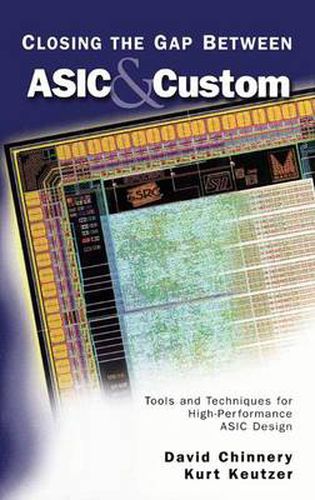Readings Newsletter
Become a Readings Member to make your shopping experience even easier.
Sign in or sign up for free!
You’re not far away from qualifying for FREE standard shipping within Australia
You’ve qualified for FREE standard shipping within Australia
The cart is loading…






This title is printed to order. This book may have been self-published. If so, we cannot guarantee the quality of the content. In the main most books will have gone through the editing process however some may not. We therefore suggest that you be aware of this before ordering this book. If in doubt check either the author or publisher’s details as we are unable to accept any returns unless they are faulty. Please contact us if you have any questions.
by Kurt Keutzer Those looking for a quick overview of the book should fast-forward to the Introduction in Chapter 1. What follows is a personal account of the creation of this book. The challenge from Earl Killian, formerly an architect of the MIPS processors and at that time Chief Architect at Tensilica, was to explain the significant performance gap between ASICs and custom circuits designed in the same process generation. The relevance of the challenge was amplified shortly thereafter by Andy Bechtolsheim, founder of Sun Microsystems and ubiquitous investor in the EDA industry. At a dinner talk at the 1999 International Symposium on Physical Design, Andy stated that the greatest near-term opportunity in CAD was to develop tools to bring the performance of ASIC circuits closer to that of custom designs. There seemed to be some synchronicity that two individuals so different in concern and character would be pre-occupied with the same problem. Intrigued by Earl and Andy’s comments, the game was afoot. Earl Killian and other veterans of microprocessor design were helpful with clues as to the sources of the performance discrepancy: layout, circuit design, clocking methodology, and dynamic logic. I soon realized that I needed help in tracking down clues. Only at a wonderful institution like the University of California at Berkeley could I so easily commandeer an ab- bodied graduate student like David Chinnery with a knowledge of architecture, circuits, computer-aided design and algorithms.
$9.00 standard shipping within Australia
FREE standard shipping within Australia for orders over $100.00
Express & International shipping calculated at checkout
This title is printed to order. This book may have been self-published. If so, we cannot guarantee the quality of the content. In the main most books will have gone through the editing process however some may not. We therefore suggest that you be aware of this before ordering this book. If in doubt check either the author or publisher’s details as we are unable to accept any returns unless they are faulty. Please contact us if you have any questions.
by Kurt Keutzer Those looking for a quick overview of the book should fast-forward to the Introduction in Chapter 1. What follows is a personal account of the creation of this book. The challenge from Earl Killian, formerly an architect of the MIPS processors and at that time Chief Architect at Tensilica, was to explain the significant performance gap between ASICs and custom circuits designed in the same process generation. The relevance of the challenge was amplified shortly thereafter by Andy Bechtolsheim, founder of Sun Microsystems and ubiquitous investor in the EDA industry. At a dinner talk at the 1999 International Symposium on Physical Design, Andy stated that the greatest near-term opportunity in CAD was to develop tools to bring the performance of ASIC circuits closer to that of custom designs. There seemed to be some synchronicity that two individuals so different in concern and character would be pre-occupied with the same problem. Intrigued by Earl and Andy’s comments, the game was afoot. Earl Killian and other veterans of microprocessor design were helpful with clues as to the sources of the performance discrepancy: layout, circuit design, clocking methodology, and dynamic logic. I soon realized that I needed help in tracking down clues. Only at a wonderful institution like the University of California at Berkeley could I so easily commandeer an ab- bodied graduate student like David Chinnery with a knowledge of architecture, circuits, computer-aided design and algorithms.